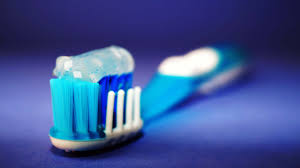Occurrence of Dental Plaques
This is also known as Tooth Plaques, Microbial Plaques or Dental Biofilm. A Plaque is that sticky, colorless to pale yellow film of bacteria that forms on teeth. It contains millions of bacteria which produces acid that can damage the teeth and eventually lead to tooth decay. The accumulation of plaques on the teeth can lead to the buildup of Tartar which forms a colorless or pale yellow biofilm on the teeth
Causes
Certain Foods especially carbohydrates (sugars and starches) frequently left on the teeth are the major cause of Plaques. The Bacteria contained in the mouth thrives on these foods and when the mouth is not properly cleaned especially after consuming these foods, the bacteria multiplies thereby causing a layer of biofilm on the teeth.
Plaque hides between teeth and under the gum line. There’s no way to avoid it entirely so it’s important to maintain a good oral routine to keep it from building up.
How to prevent plaques from occurring
If plaque is left on the teeth to build up, tooth decay and cavities would eventually occur. The top 3 ways to prevent plaques from occurring are;
- Brush thoroughly at least twice a day for two minutes.
- Floss daily to remove food particles and plaque between teeth.
- Visit the dentist at least twice a year for professional cleanings and dental examinations.
- Avoid smoking to reduce the risk of increased plaque and tartar
- Eat a balanced diet and limit the number of between-meal snacks. If you need a snack, choose nutritious foods such as plain yogurt, cheese, fruit, or raw vegetables. Vegetables, such as celery and spinach help remove food and help saliva neutralize plaque-causing acids.
Treating Dental plaques
It is easy to remove Plaque but when it accumulates and becomes Tartar, the help of a dentist would be required to remove it.
To remove plaques, ensure to floss before you brush your teeth in order to properly remove food particles hanging in between your teeth.



